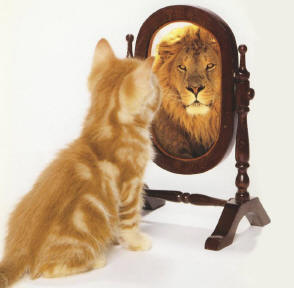Michael Rosenthal
 (5/2021) A facial recognition system is a technology capable of matching a human face from a digital image or a video frame against a database of faces. It is typically employed to authenticate people by matching a face from the database against that face one wishes to identify. It is used in smartphones and in other forms of technology such as robotics. Facial recognition systems are categorized as biometrics. This technique is not as accurate as iris (eye) recognition and fingerprint recognition. However, it is especially useful because it can be performed without physical contact, especially using video surveillance and by law enforcement agencies.
(5/2021) A facial recognition system is a technology capable of matching a human face from a digital image or a video frame against a database of faces. It is typically employed to authenticate people by matching a face from the database against that face one wishes to identify. It is used in smartphones and in other forms of technology such as robotics. Facial recognition systems are categorized as biometrics. This technique is not as accurate as iris (eye) recognition and fingerprint recognition. However, it is especially useful because it can be performed without physical contact, especially using video surveillance and by law enforcement agencies.
This technique was pioneered in the 1960s where a computer was used to recognize human faces. The computer was used to acquire and store 20 facial distances, such as the pupil centers, the inside and outside corners of the eye, and the widow’s peak in the hairline. A database would be established that could be applied to a photograph with a goal of identification. The system was crude at its beginning, but became more refined with time. The first detailed book on facial recognition was published 1n 1977 by Takeo Kanade, a pioneer in the field who began his work in 1970.
In 1993 the Defense Advanced Research Project Agency (DARPA) and the Army Research Laboratory (ARL) established a program known as FERET to develop automatic face recognition. Private companies then took on their results to further develop the use of facial recognition, and further refinement took place through the remainder of the 1990s.
The Department of Motor Vehicles in West Virginia and New Mexico were the first Departments of Motor Vehicle offices to use automated facial recognition systems to detect people trying to obtain multiple driving licenses under different names, improving greatly on the prior use of photo identification.
In the 1990s a refinement was developed beyond the use of photographic recognition of human faces. PCA, principle component analysis, also known as Eigenface, was developed by looking at the human face as a weighted combination of a number of Eigenfaces. The technique reduced the amount of data required to detect a face. Other improvements occurred over time that could make identifications from less than perfect face views, such as at airport locations, and could identify individuals in spite of beards, mustaches, changed hairstyles, and even sunglasses.
In 2001 real-time face detection in video footage became possible with the Viola-Jones object detection framework. This technique is applicable using both handheld devices and embedded systems. An obvious and important application of this device is in airports. The emerging use of facial recognition is in the use of ID verification services. Such services are being provided and utilized by banks and other businesses wanting to prevent fraudulent use of another’s ID.
Facial recognition is very much employed in China, where some 20 million cameras were put into use in 2018. This is called the Skynet Project, many of which cameras are capable of real-time facial recognition. They are deployed across the country. Don’t plan a trip to China thinking you can remain anonymous! They have a major application in travel locations such as railway stations and airports. Facial recognition systems are being utilized all over the world. 117 million adults are in the United States Department of State face recognition system. The FBI uses these photos as an investigative tool. Here in Maryland the system drew controversy when it was used in Baltimore to arrest unruly protestors after the death of Freddie Gray. Many countries in the world, including Greece, Italy, The Netherlands, South Africa, and 21 countries of the European Union are using or developing the use of facial recognition technology.
Not surprisingly, many retailers are using or preparing to use facial recognition video surveillance systems. At Super Bowl XXXV in 2001, police in Tampa Bay, Florida used facial recognition software to look for criminals and terrorists – 19 people with minor criminal records were potentially identified.
There have been reactions against the use of facial recognition technology. In May 2019 San Francisco banned its use for police and other government agencies. The American Civil Liberties Union has called for more transparency in its use. Municipal use of this technology has been banned in several California and Massachusetts cities, as well as in Portland, Oregon.
And here is a new development. The Washington Post reported that Chinese scientists are developing facial recognition for animals. China has been a leader in this new side of facial recognition with some 630 million facial recognition cameras in use. They monitor health conditions, insemination dates and other behavior data to identify animal health concerns without direct human intervention. This is part of the Chinese effort to maintain the health of farm animals, particularly in the milk industry. In addition the technique helps monitor food hygiene, especially to see whether pigs are healthy. China feeds 22 percent of the world’s population with only 19 percent of the world’s arable land, an incentive for monitoring animal behavior and their health.
Read other articles by Michael Rosenthal